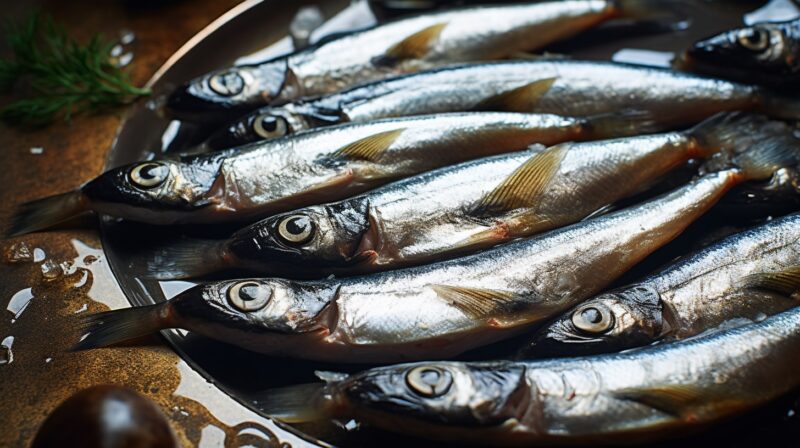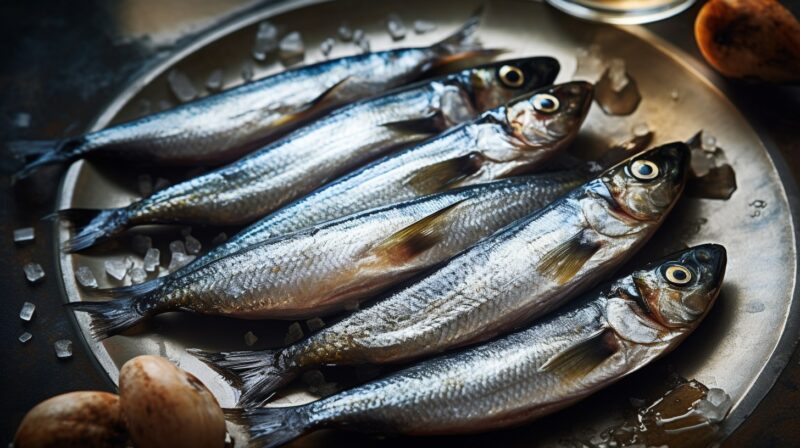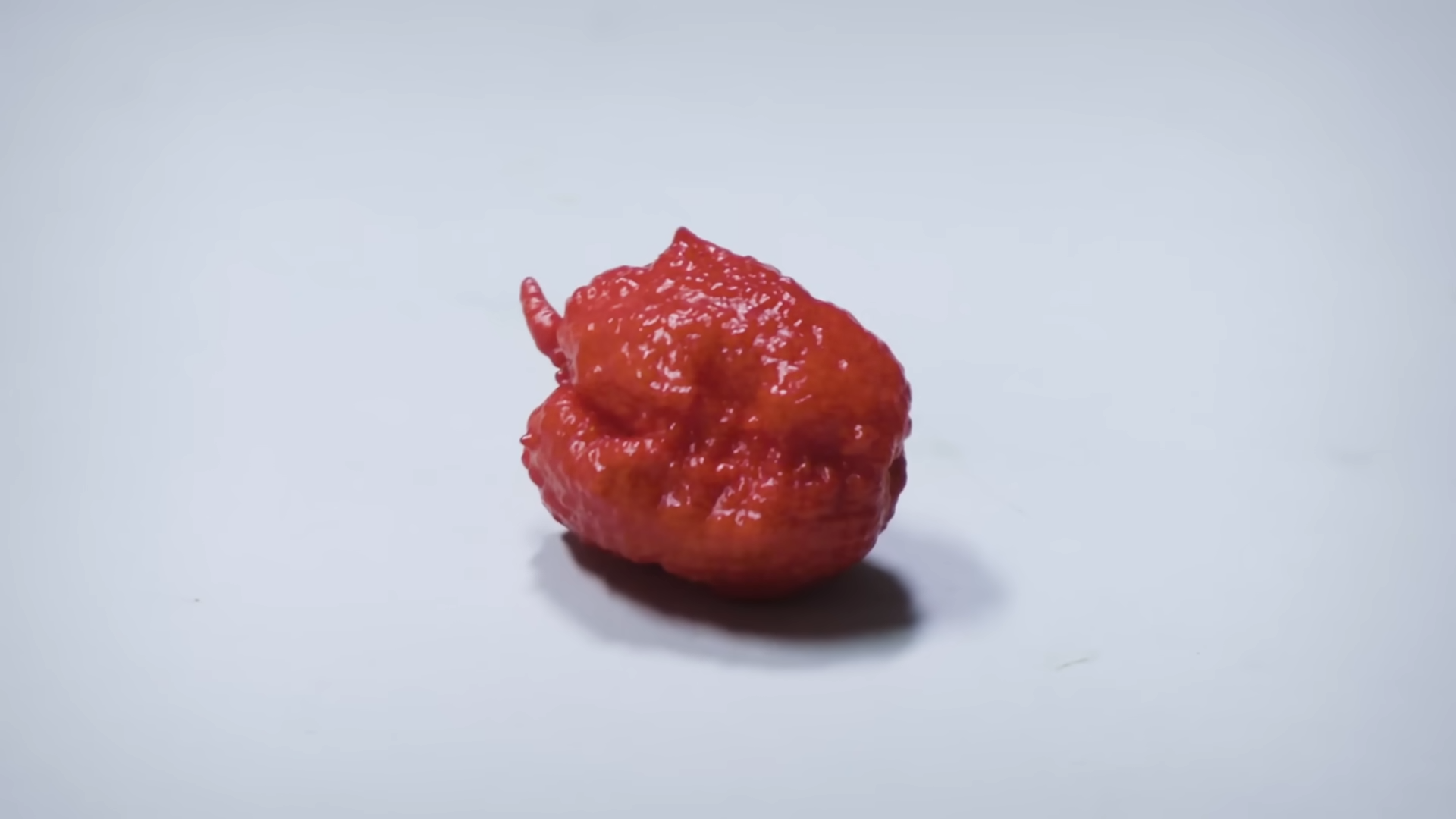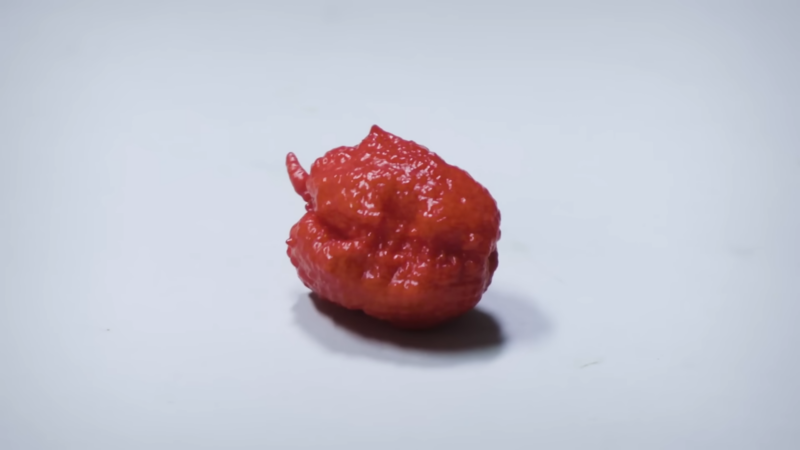
Ever found yourself standing in the seafood aisle, staring at cans of sprats and sardines, wondering what on earth is the difference?
I’ve been there too. Growing up in a family with a long fishing tradition, seafood was a staple in our meals, but it wasn’t until I moved to a bigger city that I truly began to appreciate the subtle nuances between these two tiny fish.
As someone who’s always been curious about the stories behind what I eat, I decided to find the differences between sprats and sardines. And let me tell you, it was both entertaining and delicious. So, if you’ve ever been curious about these two, you’re in for a treat!
Nutritional Profiles
When it comes to nutrition, both sprats and sardines are powerhouses, offering a range of health benefits.There are subtle differences that might make one more suitable for your dietary needs than the other.
Omega-3 Fatty Acids

Omega-3 fatty acids are essential fats that play a crucial role in brain function and overall health. Both sprats and sardines are rich in these beneficial fats, but the levels can vary depending on various factors like diet and habitat. Understanding these nuances can help you choose the right fish for your health goals.
- Sprats: Typically contain around 1.4 grams of omega-3s per 100 grams.
- Sardines: Usually offer about 1.8 grams of omega-3s per 100 grams.
While both are excellent sources, sardines slightly edge out sprats in omega-3 content. Sprats are still a fantastic option if you’re looking to boost your intake of these essential fats.
Vitamins and Minerals
Both sprats and sardines are rich in various vitamins and minerals, including Vitamin D, B12, and calcium. These nutrients are essential for bone health, energy production, and immune function. The levels of these nutrients can differ between the two fish, making one more advantageous depending on your nutritional needs.
- Sprats: High in Vitamin D and a good source of calcium but slightly lower in B12.
- Sardines: Rich in B12 and also offer a good amount of Vitamin D and calcium.
If you’re looking for higher levels of B12, sardines might be your go-to, while sprats are an excellent choice for Vitamin D.
Culinary Uses
Both sprats and sardines have found their way into kitchens around the world, thanks to their versatility and rich flavors. Whether you prefer them canned, grilled, or even raw, these fish offer a plethora of culinary options.
In Canned Form
Canned fish is a pantry staple for many, offering a quick and easy protein source. Both sprats and sardines are commonly found in canned form, often in oils or sauces that enhance their natural flavors. But what sets them apart when they’re sealed in a can?
- Sprats: Known for their mild, slightly sweet flavor and tender texture.
- Sardines: More robust in flavor with a firmer flesh, making them ideal for recipes that require a stronger fish taste.
Fresh Preparations
When it comes to cooking fresh fish, both sprats and sardines shine in their own right. While sardines are often grilled on infrared grills, sprats are commonly fried to a crispy golden brown. The cooking method you choose can significantly impact the final flavor and texture of the dish.
- Recipe Ideas
- Sprats: Try them lightly battered and fried, served with a side of tartar sauce.
- Sardines: Excellent when grilled with a drizzle of olive oil, garlic, and lemon.
Whether you prefer the crispy delight of fried sprats or the smoky goodness of grilled sardines, both offer a culinary experience worth exploring.
Ecological Impact
Nowadays, sustainability is more critical than ever, especially when it comes to our food sources. Both sprats and sardines are considered relatively sustainable options, but there are nuances in their ecological impact that are worth exploring.
Sustainability
Sustainability is a crucial factor in preserving marine ecosystems for future generations. Overfishing has led to the depletion of many fish stocks, making it essential to choose options that are harvested responsibly.
Both sprats and sardines are generally considered sustainable, but it’s crucial to look for certifications like MSC (Marine Stewardship Council) to ensure responsible fishing practices.
- Sprats: Often found in the Baltic Sea, where fishing is generally well-regulated.
- Sardines: Primarily caught in the Atlantic and Pacific Oceans, where regulations can vary.
While both are sustainable options, it’s always a good idea to check for certifications and opt for fish from well-managed fisheries.
Fishing Practices
The methods used to catch fish can have varying impacts on marine ecosystems. While both sprats and sardines are often caught using purse seines, a method considered less damaging to the environment, the specifics can differ.
Sprats are usually caught in smaller batches, often by local fishermen, while sardines are caught in larger volumes, which could potentially lead to overfishing if not managed correctly. While both are generally caught using eco-friendly methods, it’s essential to be aware of the source and opt for those from responsible fisheries.
Taste Profiles

Taste is often the deciding factor when choosing between these two. Both offer unique flavors that can either be the star of a dish or a complementary element. In this section, we’ll delve into the taste profiles of these two fish, helping you understand what to expect when you take that first bite.
Sprats are often described as having a more delicate, less fishy flavor compared to sardines. They offer a slightly sweet undertone that makes them versatile in various culinary applications, from appetizers to main courses.
On the other hand, Sardines have a more robust, oily flavor that can stand up to stronger seasonings and sauces. Their distinct taste makes them a favorite in many traditional dishes, from Mediterranean to Asian cuisines.
Textural Differences
Texture can be as important as taste when it comes to enjoying food. The mouthfeel of sprats and sardines can influence not only your dining experience but also the types of dishes these fish are best suited for. In this section, we’ll explore the textural elements that set these fish apart.
The Feel Factor
Sprats are known for their soft, tender flesh, which can almost melt in your mouth when prepared correctly. This makes them ideal for recipes that call for a more delicate texture, such as salads or light pasta dishes. Sardines offer a firmer, meatier texture that holds up well to various cooking methods, including grilling and sautéing.
Their substantial feel makes them suitable for heartier dishes where a more robust texture is desired.
Cultural Significance

Sprats and sardines are not just food; they are cultural icons in various parts of the world. From the Baltic Sea to the Mediterranean, these fish have historical and cultural significance that transcends their culinary uses. In this section, we’ll look at how these tiny titans have impacted different cultures.
In countries surrounding the Baltic Sea, sprats have long been a staple food, often smoked and enjoyed during traditional celebrations. They are deeply embedded in the culinary culture, symbolizing both sustenance and community.
Sardines are iconic in Mediterranean countries, where they are often grilled and served during festivals. Their significance goes beyond the dinner table, often representing prosperity and abundance in cultural narratives.
FAQ
Are sprats and sardines safe for pregnant women to eat?
Both are generally safe for pregnant women when consumed in moderation. They are low in mercury compared to larger fish. It’s always a good idea to consult with a healthcare professional regarding dietary choices during pregnancy.
Can I give sprats and sardines to my pets?
Sprats and sardines can be a healthy treat for pets, especially cats and dogs. They provide essential omega-3 fatty acids. Naturally, it’s best to offer them in moderation and ensure they’re free from added salt or spices.
Are there any known allergies associated with sprats and sardines?
As with many seafood items, some individuals might be allergic to sprats or sardines. It’s essential to be cautious if you’re trying them for the first time, especially if you have a history of seafood allergies.
How long can I store canned sprats and sardines?
Unopened cans can last for several years when stored in a cool, dry place. Once opened, it’s best to transfer any leftovers to a sealed container and refrigerate, consuming them within 1-2 days.
The Bottom Line
I must admit, the more I learned, the more I appreciated the tiny titans of the sea. From their unique flavors to their cultural significance, there’s so much more to them than meets the eye.
The next time you’re at the store, debating between sprats and sardines, I hope you’ll remember our little insight. And who knows? Maybe you’ll even be inspired to try a new recipe or two.
Related Posts:




















